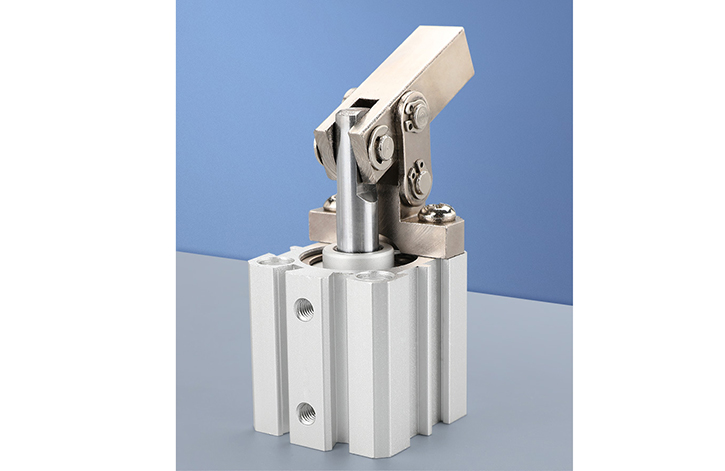Working principle of lever cylinder
Lever cylinderWhen using a lever, in order to save effort, the power arm should be longer than the resistance arm. Lever;if you want to save distance, you should use a lever with a shorter power arm than a resistance arm. Therefore, using lever can save effort and distance. However, if you want to save effort, you must move more distance;if you want to move less distance, you must expend more effort. It is impossibleto save effort and move less distance. It is from these axioms and on the basis of the "center of gravity" theory that the lever principle was discovered, that is, "when two heavy objects are balanced, their distance from the fulcrum is inversely proportional to their weight.

Lever cylinderWorking principle analysis:Lever cylinderThe fulcrum of the lever does not necessarily have to be in the middle, a system that satisfies the following three points , basically it is a lever: fulcrum, force application point, force receiving pointpoint. Power arm extension. There are also labor-saving levers and labor-saving levers, both of which have different functions.
For example, there is a foot pump or a hand-pressed juicer, which saves effortLever (moment arm > moment of force);but we have to press down a larger distance, and the force-bearing end only has a smaller movement. There is also a laborious lever. For example, on a roadside crane, the hook for fishing is on the entirerod. The tail end is the fulcrum and the middle is the hydraulic press (torque > moment arm). This is laborious. The lever, but in exchange for the effort, as long as the middle force application point moves a small distance, the hook will move a considerabledistance.
Two kindsLever cylinderAll have their uses, but the place to use them needs to be evaluated to save effort or range of motion. In addition, there is something called an axle, which can also be used as a lever. However, the performance may sometimes require calculation of rotation. The ancient Greek scientist Archimedes has a famous saying that has been passed down through the ages: 'If you give me a fulcrum, I can lift the earth.' This sentence is not only The inspiring aphorism has a strict scientific basisLever cylinder Analysis of working principle: Lever is indispensable in almost every machine. Even in the human body, there are many levers at work.
Motion trajectory of lever cylinder
When the engine is working, the piston ring is pressed against the lever cylinder wall under the action of its own elastic force and the gas pressure transmitted to the back. The piston is at top dead center, and the piston rings are facing each other during the power strokeThe pressure generated by the cylinder wall is the largest in the first ring, with the pressure as high as 2940×103Pa, the second ring 735×103Pa, and the third ring 294×103Pa;at the same time, The high pressure destroys the oil film, causing boundary lubrication and aggravating cylinder wear;and the pressure decreases sharply as the piston moves downward, and the pressure of the piston ring on the lever cylinder wall is larger at the top and smaller at the bottom. The upper part of the lever cylinder where the piston ring does not contact has almost no wear, forming an obvious step, commonly known as the "cylinder shoulder".
The above isThe working of the lever cylinder Principle, movement trajectory of lever cylinderContent introduction, if you want to know more related information, please log in to Sunway PneumaticView at www.diancifa.cc.






 WhatsApp: +8615857777578
WhatsApp: +8615857777578